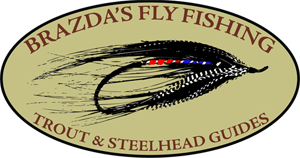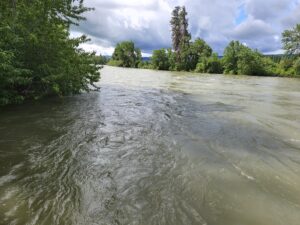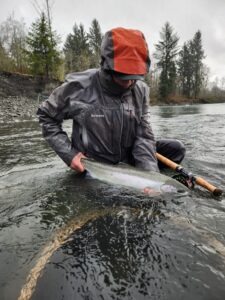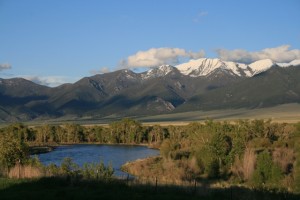WDFW NEWS RELEASE
Washington Department of Fish and Wildlife
600 Capitol Way North, Olympia, WA 98501-1091
http://wdfw.wa.gov/
August 11, 2010
Contacts: Pat Frazier (WDFW), 360-906-6711
John North (ODFW), 971-673-6029
Alternative commercial fishing gears
to be tested on lower Columbia River
OLYMPIA – Starting this week, fishery managers from Washington and Oregon will test the feasibility of five types of alternative commercial fishing gears on the lower Columbia River.
Expanding on a pilot project conducted last year, the Washington Department of Fish and Wildlife (WDFW) will work with commercial salmon fishers to test purse seines, beach seines and trap nets.
In addition, the Oregon Department of Fish and Wildlife (ODFW) will work with a team of commercial fishers to test commercial troll gear and tangle nets during fall chinook and coho salmon runs.
Additional types of fishing gear will be evaluated in the future.
This year’s test fishing, funded primarily by NOAA Fisheries and an Oregon legislative appropriation, will be conducted from mid-August through October at various sites downstream of Bonneville Dam. Tests will include five purse seines, five beach seines, two trap nets, two trollers and three different types of tangle nets.
“Our shared goal is to identify and develop commercial fishing gear capable of catching large numbers of hatchery salmon, while also allowing for the safe release of wild fish,” said Pat Frazier, regional WDFW fish manager. “These tests are a critical step toward achieving that goal.”
Gears that achieve that goal could be approved for future use on the lower Columbia River, where gillnets are now the primary gear used in commercial fisheries. While gillnets are highly effective at catching salmon, alternative gears may increase the ability to release wild fish in good condition, Frazier said.
“Because many wild salmon and steelhead populations are listed for protection under the federal Endangered Species Act, impact limits on these fish often curtail fisheries even when large numbers of hatchery-reared fish are available for harvest,” said John North, ODFW Columbia River Fisheries manager.
Development of viable fishing gear that can selectively remove hatchery fish would not only benefit commercial fisheries, but may also contribute to the recovery of wild salmon stocks on the Columbia River by reducing interactions with hatchery fish, North said.
In that regard, the results of last year’s pilot project were promising, said Frazier, who oversaw gear tests conducted by WDFW. Working with a purse seine, beach seine and trap net, WDFW project members caught and sorted 884 salmon, of which only one died during handling.
“The immediate survival rate was very good, but we need to conduct further tests to determine if these, or other gear types, are viable on a commercial scale,” Frazier said. “We also need to test them in different areas and under different conditions. That will be a major focus of this year’s tests.”
This is a great start to having Selective harvest and sustainability in commercial fisheries, a big issue for the survival of Washington steelhead and Salmon runs!



